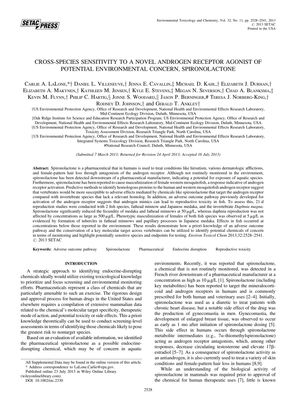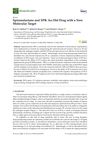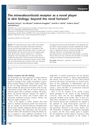Cross-Species Sensitivity to a Novel Androgen Receptor Agonist of Potential Environmental Concern, Spironolactone
July 2013
in “
Environmental Toxicology and Chemistry
”

TLDR Spironolactone harms fish reproduction and is more potent in fish than invertebrates, needing environmental monitoring.
The document from 2013 examines the environmental impact of spironolactone, a drug used to treat hair loss and other conditions in humans, on aquatic species. The study found that spironolactone significantly reduced fecundity in two fish species, fathead minnow and Japanese medaka, at concentrations of 50 µg/L and caused phenotypic masculinization at 5 µg/L, while it did not affect the invertebrate Daphnia magna even at 500 µg/L. This suggests that vertebrates are more sensitive to spironolactone due to the conservation of the androgen receptor. The study also found that spironolactone and its metabolite canrenone were present in fish tissues, indicating similar metabolic pathways between humans and fish. Spironolactone was more potent as an androgen receptor agonist in fish, which could be due to continuous exposure and potentially less efficient metabolism in fish compared to humans. The study highlights the need for monitoring spironolactone and canrenone in aquatic environments due to their potential reproductive toxicity at environmentally relevant concentrations.




